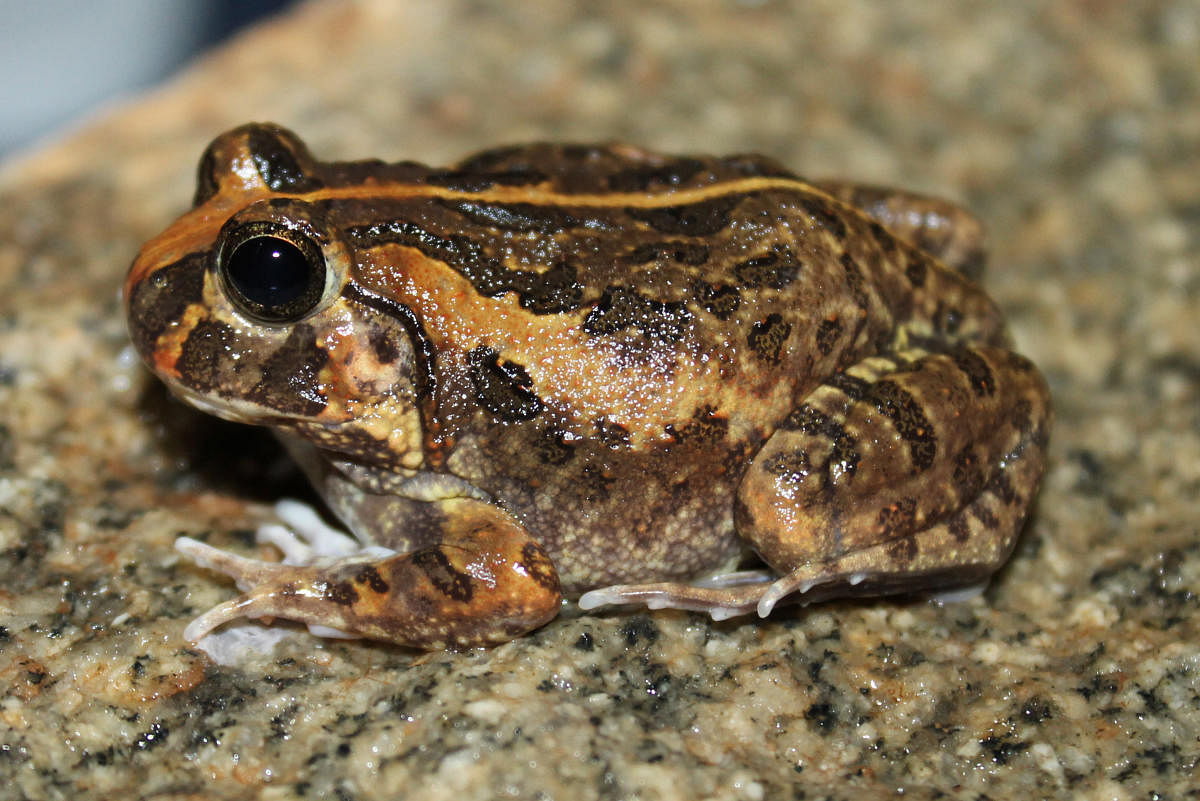

The discovery of a new species of frog in Bengaluru in an unexpected location not only indicates that the city is home to other uncatalogued species, but has also come as a stark warning on the pollution of water bodies.
The burrowing frog, christened Sphaerotheca Bengaluru after the city, was surprisingly found outside normal habitats, in a barren tract of land at Budumanahalli near Rajankunte where there is no permanent source of water, said veteran taxonomist Dr K P Dinesh of the Zoological Survey of India and second author of the research publication.
“This genus of frog is generally located around freshwater areas or in forested landscapes. Water is vital to the completion of their life-cycle,” Dr Dinesh said.
He said the presence of the new frog, which has not been found in or around any of the city’s water bodies, suggests that they could have become uninhabitable for the new species. The scientists said the frog’s closest relative, S. pashchima, is found 700 km away in the Western Ghats. The findings were published in the journal Zootaxa on Thursday.
Unexpected discovery
The discovery was actually made by an amateur herpetologist, associate professor P Deepak of Mount Carmel College, in 2018, while he was conducting amphibian studies in dry zones.
“My knowledge of frogs was limited. So I sent some images to the Zoological Survey of India,” Deepak, the first author, told DH.
Dr Dinesh said he realised the animal belonged to the genus Sphaerotheca, but found that it was a potentially new species.
“A phylogenetic study confirmed our suspicions that it was a new species,” Dr Dinesh said. “The finding suggests that frogs can be found outside forests, and that there could have been other undiscovered species living in the city which we may have lost or are perhaps still surviving in other ecosystems.”
He likened the frogs to the “canary in the coalmine” which is the first to feel the brunt of a contamination. “They are the first to be affected by water pollution and their behaviour tells us about the quality of an ecosystem,” he said.
Environment scientist Dr T V Ramachandra said pollution of 90% of the city’s 193 water bodies has had a devastating impact on ecological balance.
“Nearly 40% of lakes in the city are witness to industrial effluent dumping. Sewage and solid waste dumping are also big problems, but one of the primary reasons for habitat loss of animals is encroachment, even through the construction of jogger lanes. The loss of the shoreline has a detrimental effect on animal life,” he said.
He added that low ecological literacy in Bengaluru was also to blame. “Lakes have become synonymous with concrete bunds. Most people do not realise that when you pollute a water body, the pollution comes back to you in the form of food. Fish for human consumption and shoreline greenery fed to cattle contain amounts of trace metals,” he said.